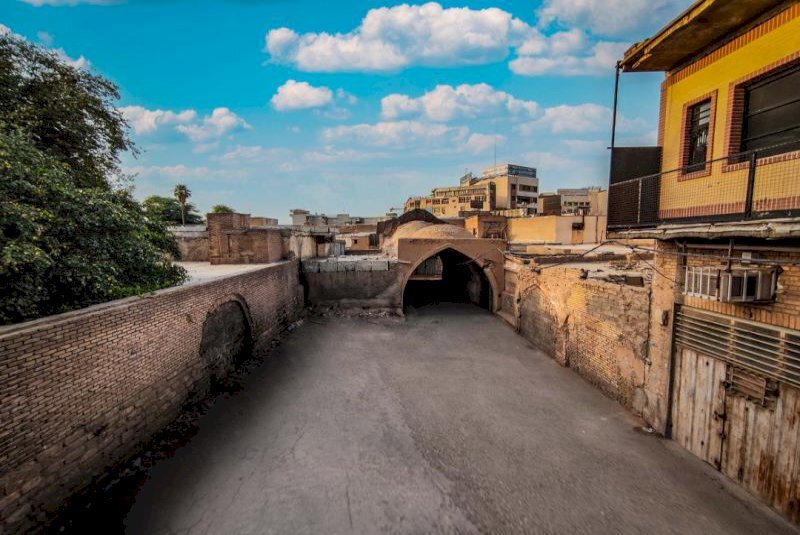Qajar-era sabat being restored to former glory

TEHRAN – The Qajar-era (1789-1925) Moein al-Tojjar Sabat in Ahvaz, southwestern Khuzestan province has undergone some rehabilitation works, Ahvaz’s tourism chief has said.
Sabat is an arched structure built between the opposite buildings on both sides of a narrow street in tropical and desert areas and it creates shade and a cool place for passers-by. Due to its semi-covered nature, this structure creates air blinds in summer, which cools the air inside the sabat, and in winter makes the air warmer.
The restoration project aims at repairing the rooftop and walls of the sabat, which is a part of the Moein al-Tojjar historical bazaar, Tabar Qarib explained on Monday.
The historical structure has been inscribed on the national heritage list.
Khuzestan is home to three UNESCO World Heritage sites of Susa, Tchogha Zanbil, and Shushtar Historical Hydraulic System yet it is a region of raw beauty that its visitors could spend weeks exploring. The province is also a cradle for handicrafts and arts whose crafters inherited from their preceding generations.
Lying at the head of the Persian Gulf and bordering Iraq on the west, Khuzestan was settled about 6000 BC by a people with affinities to the Sumerians, who came from the Zagros Mountains region. Urban centers appeared there nearly contemporaneously with the first cities in Mesopotamia in the 4th millennium. Khuzestan, according to Encyclopedia Britannica, came to constitute the heart of the Elamite kingdom, with Susa as its capital.
ABU/MG
